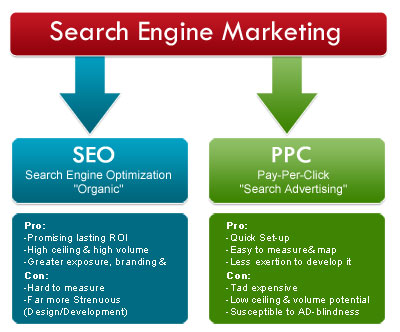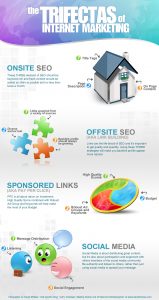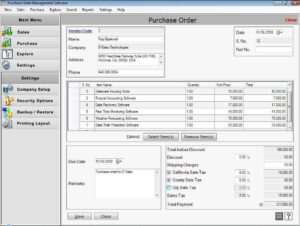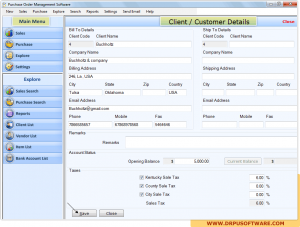Providing Accessibility for All Users

A lot of websites basically give lip service to ease of access, such that the situation is still persistent. Internet site designers should be reminded of the rudimentary convenience advice and exactly how it could change their design for the better.
Accessibility is the buzz word in website design but the reality is that, more often than not, it remains only that – a hype expression. Serious, website designers may very well claim that they want to make their design as being available as it can be, and yet if you look into the total number of web sites that are in fact accessible to ALL computer users, then you will certainly be aware of just how much website designers in truth just concentrate on the majority of the market. As with a large number of things, users with disabilities get the short end of the stick.
Concerning promoting and advertising, putting a large amount of time and resources on for much less than 10% to 20% of the current market, can seem to be good. After all the conversion interest rates will surely be in fact smaller than that. The reality nonetheless is that the regulation plainly declares that web sites will need to be readily available to everyone, this includes anyone with disabilities. As outlined by the Disability Discrimination Act (DDA), which has been around for more than a decade, companies need to “take satisfactory measures to enhance a routine which makes it unreasonably impossible for handicapped consumers to make use of its products. On top of that it declares that to establish accessibility an example of good assistance that they really should deliver may well include “accessible website pages”. Just by disregarding legislation, website owners aren’t just passing up an chance to make use of an added 10% to 20% of the market but also risking getting prosecuted.
To make certain you offer an accessible website, the correct place to start is without doubt the W3C’s Web Accessibility Initiative (WAI) site. Seeing that it tackles the main issue quite exhaustively, We would suggest that you really commence with by going into their priority checkpoints, to check out if your website at the very least incorporates to or implements vast majority of regulations.
Step 2. The the very top priorities regarding internet site convenience are listed below:1. Offering a text equivalent for non-text features. This is to make certain that screen readers can read those features and report to visually impaired customers whatever is in that section of the internet site. We will mostly provide the text equivalent quite simply by selecting Alt tags or use the “longdesc”.
Two. Making certain that coloured info are also easily available devoid of colour. This is for the colour blind.
Step 3. Implementing improvements in the natural language of a document’s text and any text equivalents clearly defined. For example, if you will probably be making use of captions it ought to be crystal-clear that it is a caption intended for an image without being part of the paragraph, this way details will make good sense when read through a screen reader.
4. Try to make things style sheet independent. This article really should be legible even in the event it’s read without the style sheet. This can be a typical difficulty, even when it comes to simple rendering of a web site using style sheets.
Five. Ensure that there is an equivalent written content available for dynamic content. Dynamic content, such as flashing text, is regarded as a tremendous problem in view that screen readers can’t read movement text. Likewise, people that have mobility conditions might find it particularly tough to follow moving text. And last, but one of the most serious issue, is that some specific frequencies could result in seizures for people who have got photosensitive epilepsy. To guarantee this does not occur you can either give a static equivalent of the dynamic content or permit clients to manage the flickering.
Step six. Remember to keep it sweet and simple. Simply being concise and employing simple language would make things easier for Everyone, such as individuals with reading disabilities and every day internet users who hate having to go all the way through meaningless nonsense. The above pointers are just the normal guidelines made available by the W3C, for anyone who is making use of image samples, tables, frames, and such like, you can find even extra pointers that you follow. At the end, as a website designer you will certainly realize that using these accessibility guidelines won’t only greatly influence web users with handicaps, but possibly even show you how to change your entire approach to designing a internet site. Its going to be a whole lot more work but can lead to a less complicated and all in all much more user-friendly web site. www.cambridge-seo.co.uk is seen as a website that is loaded with lots of up to date information about seo report.
Minimalism and White White space is a very significant element of internet site design. It’s usually ignored by customers but is an upcoming trend website designers can’t afford to not recognize. If you employ white space properly, your web site designs will certainly raise noticeably.
Minimalism and white space is a fast becoming a innovation throughout website design. Google is perhaps the poster child with regard to minimalism and white space, and judging only from their achievements, then we can conclude that it truly is the way for you to go. Before the advantageous functions and effects of white spaces are pointed out, I want to just describe quickly what minimalism and white space is, and how they correspond with one another. White space is simply just the area or region between the elements of a internet site (i.e. the area between the text, images, footers, etc.).
Minimalism, in web design, is really a idea whereby the type is being used as the major design element, which will mean that images, texture, and colour takes the back stage. Owing to the way type is given main focus in a minimalist design, extra white space is ordinarily created.
The significant benefit of a minimalist design, whenever executed accurately, is that acquiring all the white space leads to less visual chaos. This in turn can help the user in terms of focusing on the key areas of the web page due to the fact pointless components are not there to disturb them. This indicates that there’s an increase in the customer’s ability to digest and keep the data on the page. The reason for this is that given that there is less visual stimuli, they can focus on processing the crucial details as opposed to subliminally process other extraneous information at the same time. What’s more, it also visibly indicates to the customer what they can get and achieve on that page. For instance, in Google’s case, it is apparent that the user needs only to type their search string in the box and click on the button to get their search results. In other websites, it may possibly help in conversions due to the fact the subscribe or buy button is going to be quicker to choose.
Aside from it’s effects on the attention, a minimalist design also usually result in a much more great looking webpage. While appearances is undoubtedly very highly subjective, generally, implementing more white space provides ease-of-use and elegance. Note too that aesthetics can be really powerful in website development mainly because it profoundly impacts consumer satisfaction. The strange thing is that as customer satisfaction increases, their perception of the usability of a internet site also increases, whether this is a primary consequence of the minimalist design or just their eagerness to master how to get around the internet site far more effectively is not always identified, but what’s essential is that it has a positive effect.
Irrespective of all the positive factors that a minimalist design will bring it’s still essential to remember that its the correct usage of white space that makes things a lot more helpful. Utilizing a minimalist design and having a lot of white space doesn’t automatically suggest a great website design. Just like in many things, there is certainly no clear cut solution. You’ll need to take into account all the individual text and data that ought to be on a web page to view how you can benefit from white space successfully.
Amongst the main issues to contemplate whenever opting to go minimalist or not will be the desire feel of the internet site. As mentioned above, a minimalist design usually invokes a much more elegant feel. To be sure, elegance is also usually equated with luxury and expensiveness. Consequently, it is really evident that if your organization is promoting inexpensive household furniture in Peterborough, internet site design of every page really should have a visual impression that screams very affordable and not dear. This would mean making use of plenty of large coloured print styles, sales signs, cut price tags, and fewer white space. If an individual on the lookout for inexpensive furniture lands on a page with just a single living room chair and the identify of the shop on it, it is not unlikely that that customer will assume that prices will not be in their range and simply go to a further site.
One more factor to contemplate when playing around with white space is the idea of active and passive white space. Passive white space is utilized simply to enhance readability of text. Having too little white space between characters and lines, it is just to difficult to read. Active white space, however, takes it one step further by utilizing the white space to attract attention to a specific detail on the screen. For example, by adding just a little bit more white space than normal between a paragraph sandwiched linking two others and emphasizing that paragraph, you automatically draw attention to that line to ensure that regardless of whether readers might not end up reading through all of the text, they’d at least look over that essential line first. The exact same is true for including white space around logos and clickable elements.
The crucial thing in utilising white space is that you need to continue to keep on practicing to ensure that deciding whether more or less white space is required for each and every website. In the end, it’ll come a lot simpler to you and your web design will stand out because of that little something customers do not realize they in fact pay attention to – white space.









